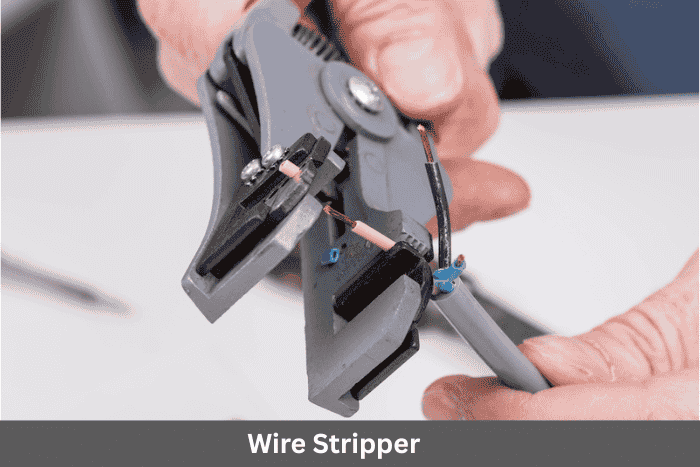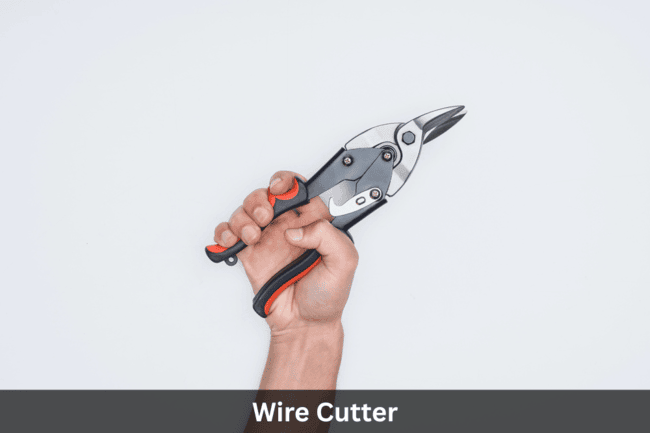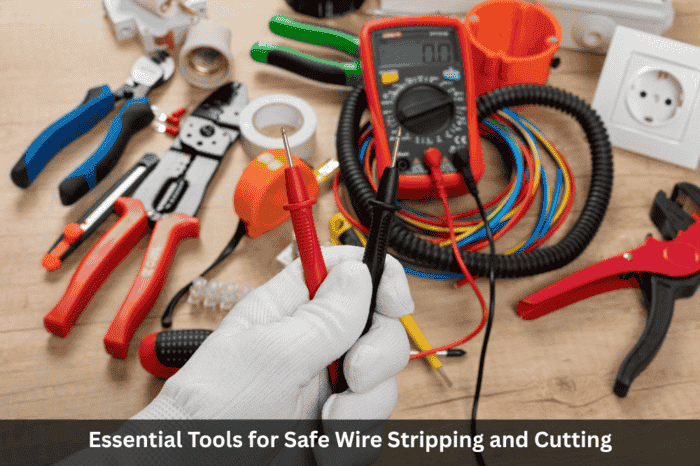Whether you are a professional electrician, handyman, or an at-home do-it-yourselfer, having the right tools ensures the job is done safely and accurately.
Wire strippers, wire cutters, and pliers are the three essential tools needed to tackle a project that requires stripping and cutting wire.
Let’s take a closer look at the top three tools you’ll need to strip and cut a wire.
1. Wire Strippers

If you’ve ever had to install ethernet or coaxial cables, a sound system in a car, fix a light fixture, a light switch, or an electronic children’s toy, then you know that to make a new connection or repair one that is broken requires removing the plastic outer layer to expose the delicate metal wire core.
A proper wire connection requires a clean cut and the removal of just enough of the plastic insulation to make contact.
Stripping too much of it could leave exposed wires to touch each other or other surfaces, potentially leading to electrical fires, damage, and electrical shock to those who touch it unprotected.
Although it may be tempting to improvise a stripping tool by using nail clippers, scissors, or a utility knife when you find yourself in a bind, doing so should be avoided.
Wire strippers are specifically designed to cut to an exact depth. This allows you to remove the insulation without damaging the fragile metal core.
There are two types of wire strippers, manual and automatic.
Read more: What is the difference between a Cut-off wheel and a Grinding wheel?
1. Manual strippers
Manual strippers are similar to scissors, with the exception that they have a notch in the middle of the blades where you place the wire. As you press the blades together, you rotate the wire to cut and remove the outer insulation.
They usually have varying notch sizes, measured in American Wire Gauge (AWG), which is a “standardized system for measuring diameters of single, solid, round, electrical conducting wire.”
The higher the gauge number, the lower the wire diameter. In general, household wiring is between 14 and 12 AWG.
2. Automatic strippers
Automatic strippers are great when you have to strip a lot of wiring since they reduce the effort and operator fatigue.
These strippers have one side that grasps the wire while the other removes the insulation.
Keep in mind that they may not be appropriate for all applications as they may break thinner wires.
2. Wire Cutters

With insulated handles to protect you from being shocked, wire cutters are essential to cutting wire, such as copper, brass, iron, aluminum, and steel, with minimal damage.
To ensure the cleanest cut for a strong connection, consider whether you need a diagonal cutter or a symmetrical cutter.
Diagonal cutters, otherwise known as Flush Cutters by professionals, cut wire at an angle, allowing you to cut wire flat and therefore, very close to its base.
By contrast, symmetrical cutters produce a pointed tip.
There are also manual and ratcheting action cutters. Manual cutters are easy to operate with one hand, offering single-stroke cutting.
Ratcheting cutters, on the other hand, deliver a cleaner cut, can cut through thicker wire and cables, and do not need to be readjusted after every cut, thus reducing operator fatigue in the process.
3. Pliers

Built similar to everyday scissors, pliers have jaws instead of blades to grip and serve a variety of purposes.
Depending on your needs, you may use:
- Long Nose Pliers – Need to squeeze into tight spaces to move, bend, or loop wires? These are the pliers for you!
- Cutting Pliers – These pliers are excellent for cutting through thick electrical wire, screws, and nails.
- Electronic Pliers – Also known as Micro Pliers, they are small and narrow for cutting fragile parts on circuit boards, and even jewelry wire.
- Bent Nose Pliers – With jaws bent at an angle at the tip, these pliers can reach compact spaces.
- Flat Nose Pliers – These pliers are excellent for holding and bending wires due to their large, flat surface area.
Final Thoughts on the Three Essential Tools to Strip and Cut Wire Safely
Safety is of the utmost importance when handling electrical wires or cables. Wire strippers, cutters, and pliers are three must-have tools to safely strip and cut wire.
Whether doing on-the-spot repairs on a boat, repairing a light fixture, restoring a TV antenna, or handling a more complex home repair project, using the right tools for the job can be the difference between a safe outcome and injury.











Leave a Review